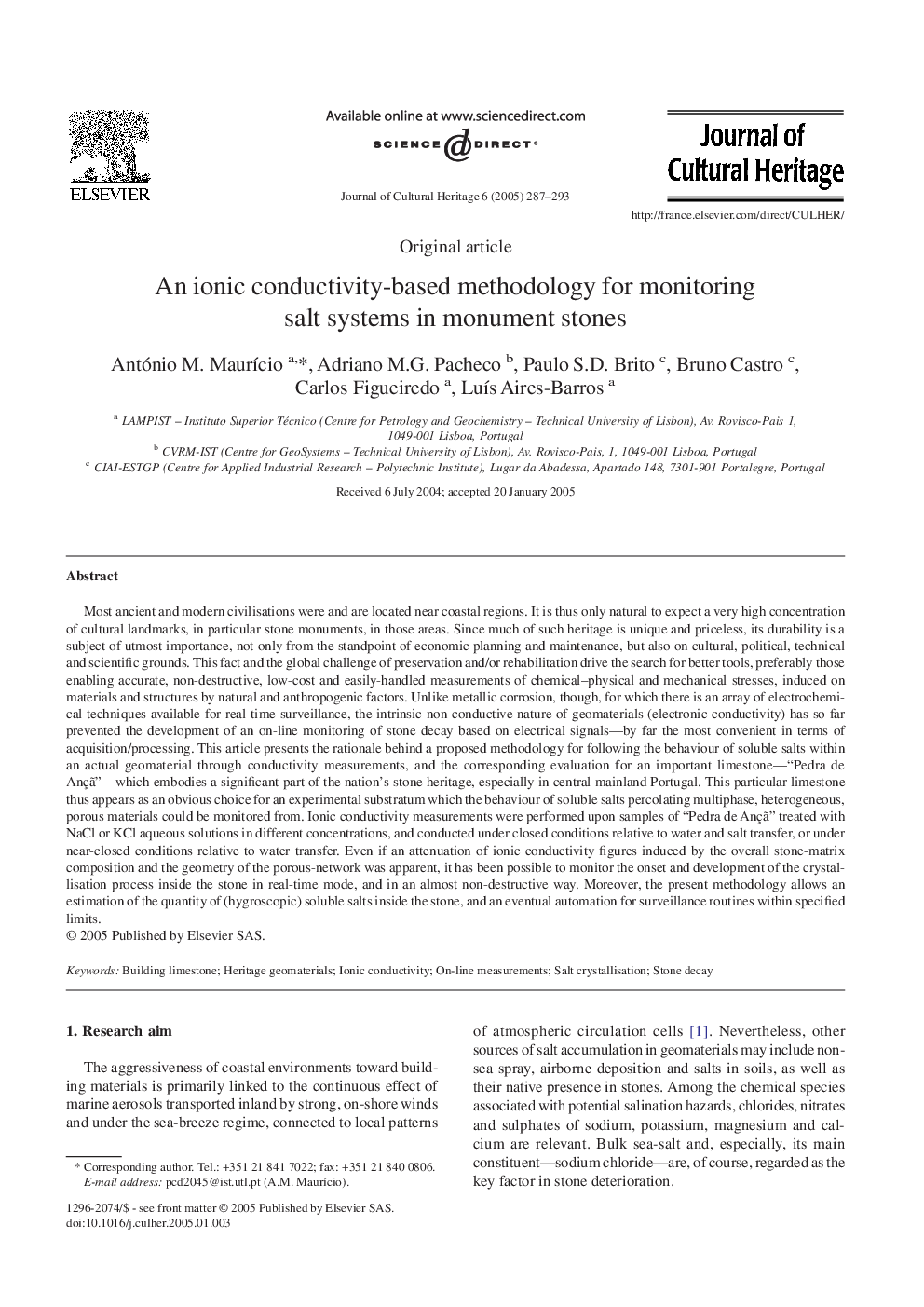| کد مقاله | کد نشریه | سال انتشار | مقاله انگلیسی | نسخه تمام متن |
|---|---|---|---|---|
| 10500048 | 944237 | 2005 | 7 صفحه PDF | دانلود رایگان |
عنوان انگلیسی مقاله ISI
An ionic conductivity-based methodology for monitoring salt systems in monument stones
دانلود مقاله + سفارش ترجمه
دانلود مقاله ISI انگلیسی
رایگان برای ایرانیان
کلمات کلیدی
موضوعات مرتبط
مهندسی و علوم پایه
شیمی
شیمی تئوریک و عملی
پیش نمایش صفحه اول مقاله

چکیده انگلیسی
Most ancient and modern civilisations were and are located near coastal regions. It is thus only natural to expect a very high concentration of cultural landmarks, in particular stone monuments, in those areas. Since much of such heritage is unique and priceless, its durability is a subject of utmost importance, not only from the standpoint of economic planning and maintenance, but also on cultural, political, technical and scientific grounds. This fact and the global challenge of preservation and/or rehabilitation drive the search for better tools, preferably those enabling accurate, non-destructive, low-cost and easily-handled measurements of chemical-physical and mechanical stresses, induced on materials and structures by natural and anthropogenic factors. Unlike metallic corrosion, though, for which there is an array of electrochemical techniques available for real-time surveillance, the intrinsic non-conductive nature of geomaterials (electronic conductivity) has so far prevented the development of an on-line monitoring of stone decay based on electrical signals-by far the most convenient in terms of acquisition/processing. This article presents the rationale behind a proposed methodology for following the behaviour of soluble salts within an actual geomaterial through conductivity measurements, and the corresponding evaluation for an important limestone-“Pedra de Ançã”-which embodies a significant part of the nation's stone heritage, especially in central mainland Portugal. This particular limestone thus appears as an obvious choice for an experimental substratum which the behaviour of soluble salts percolating multiphase, heterogeneous, porous materials could be monitored from. Ionic conductivity measurements were performed upon samples of “Pedra de Ançã” treated with NaCl or KCl aqueous solutions in different concentrations, and conducted under closed conditions relative to water and salt transfer, or under near-closed conditions relative to water transfer. Even if an attenuation of ionic conductivity figures induced by the overall stone-matrix composition and the geometry of the porous-network was apparent, it has been possible to monitor the onset and development of the crystallisation process inside the stone in real-time mode, and in an almost non-destructive way. Moreover, the present methodology allows an estimation of the quantity of (hygroscopic) soluble salts inside the stone, and an eventual automation for surveillance routines within specified limits.
ناشر
Database: Elsevier - ScienceDirect (ساینس دایرکت)
Journal: Journal of Cultural Heritage - Volume 6, Issue 4, December 2005, Pages 287-293
Journal: Journal of Cultural Heritage - Volume 6, Issue 4, December 2005, Pages 287-293
نویسندگان
António M. MaurÃcio, Adriano M.G. Pacheco, Paulo S.D. Brito, Bruno Castro, Carlos Figueiredo, LuÃs Aires-Barros,